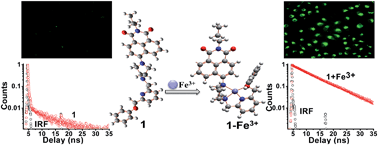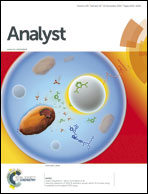A naphthalimide based PET probe with Fe3+ selective detection ability: theoretical and experimental study†
Abstract
A naphthalimide based fluorescent probe ‘1’ that operates based on photoinduced electron transfer phenomenon is synthesized and its chemosensory application is explored. Among various metal ions, 1 selectively detects Fe3+ with a detection limit of 3.0 × 10−8 M. 1 is stable at physiological pH, nontoxic under experimental conditions and suitable for the detection of Fe3+ ions present in aqueous samples and live cells.


 Please wait while we load your content...
Please wait while we load your content...